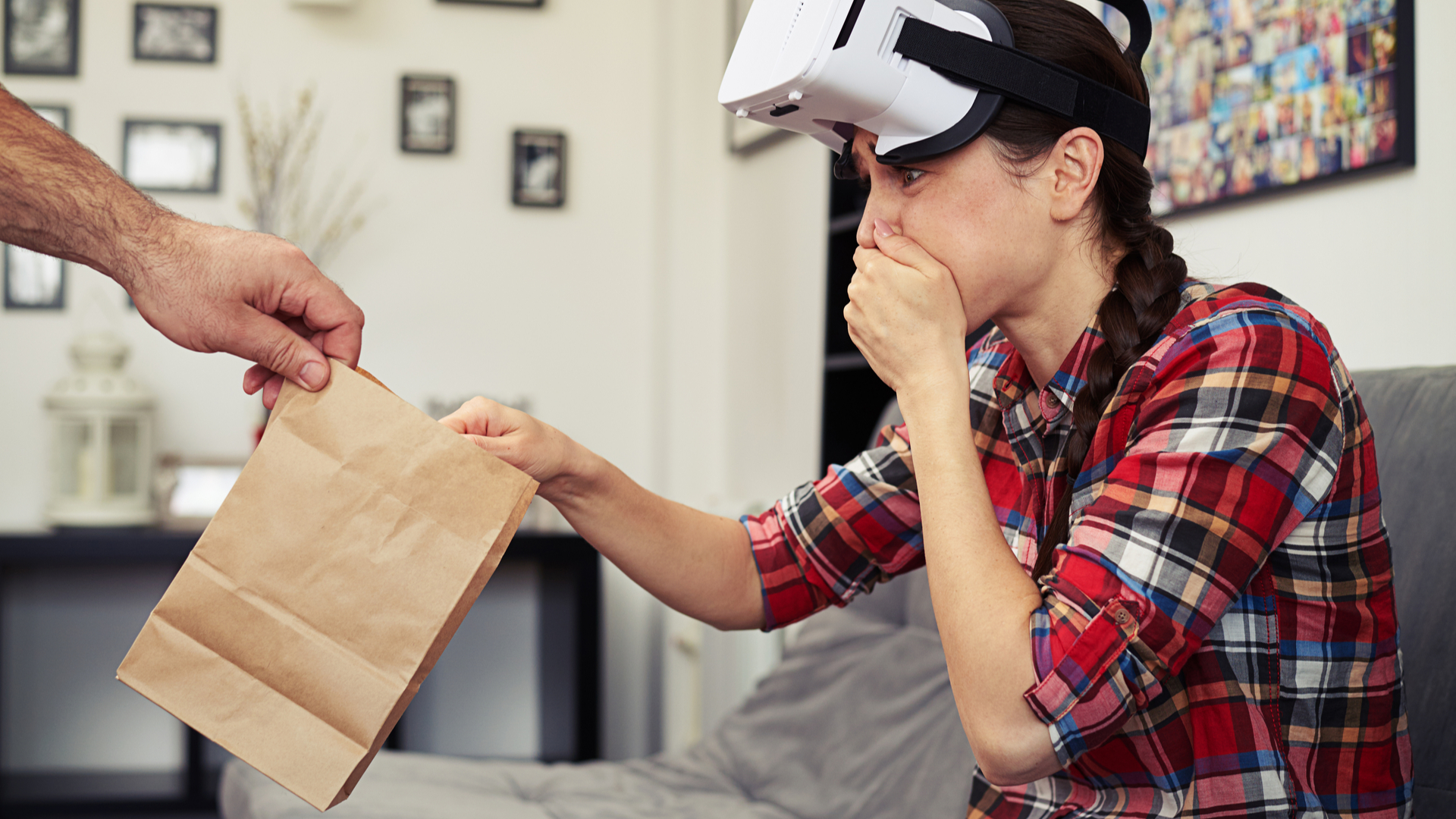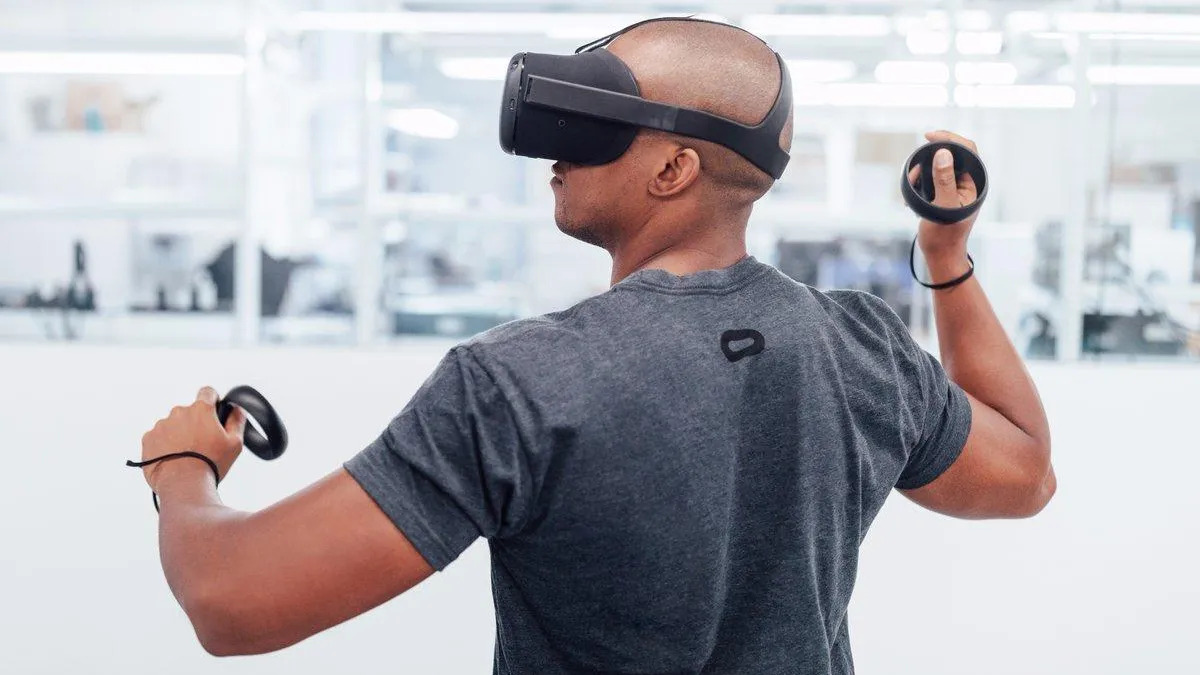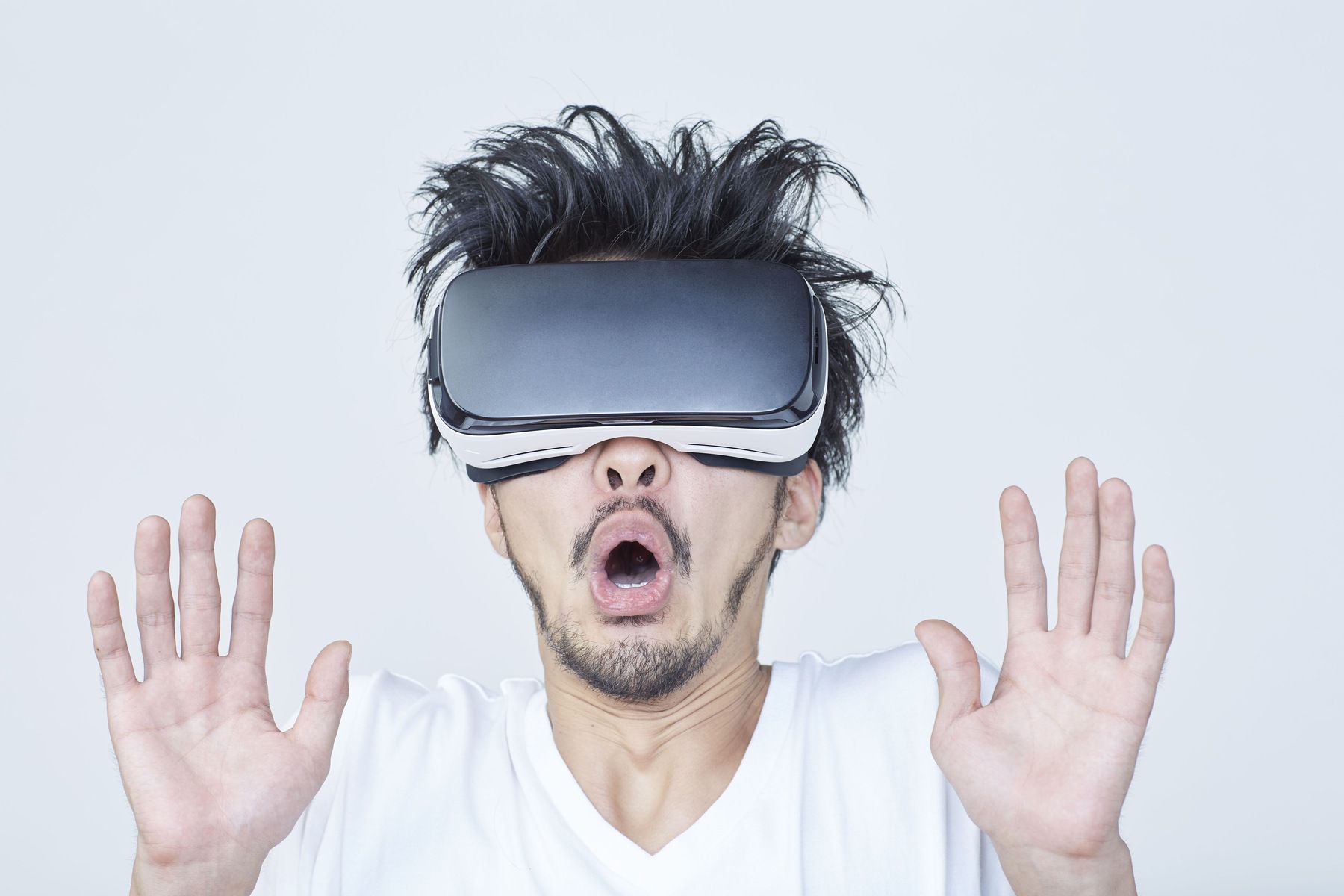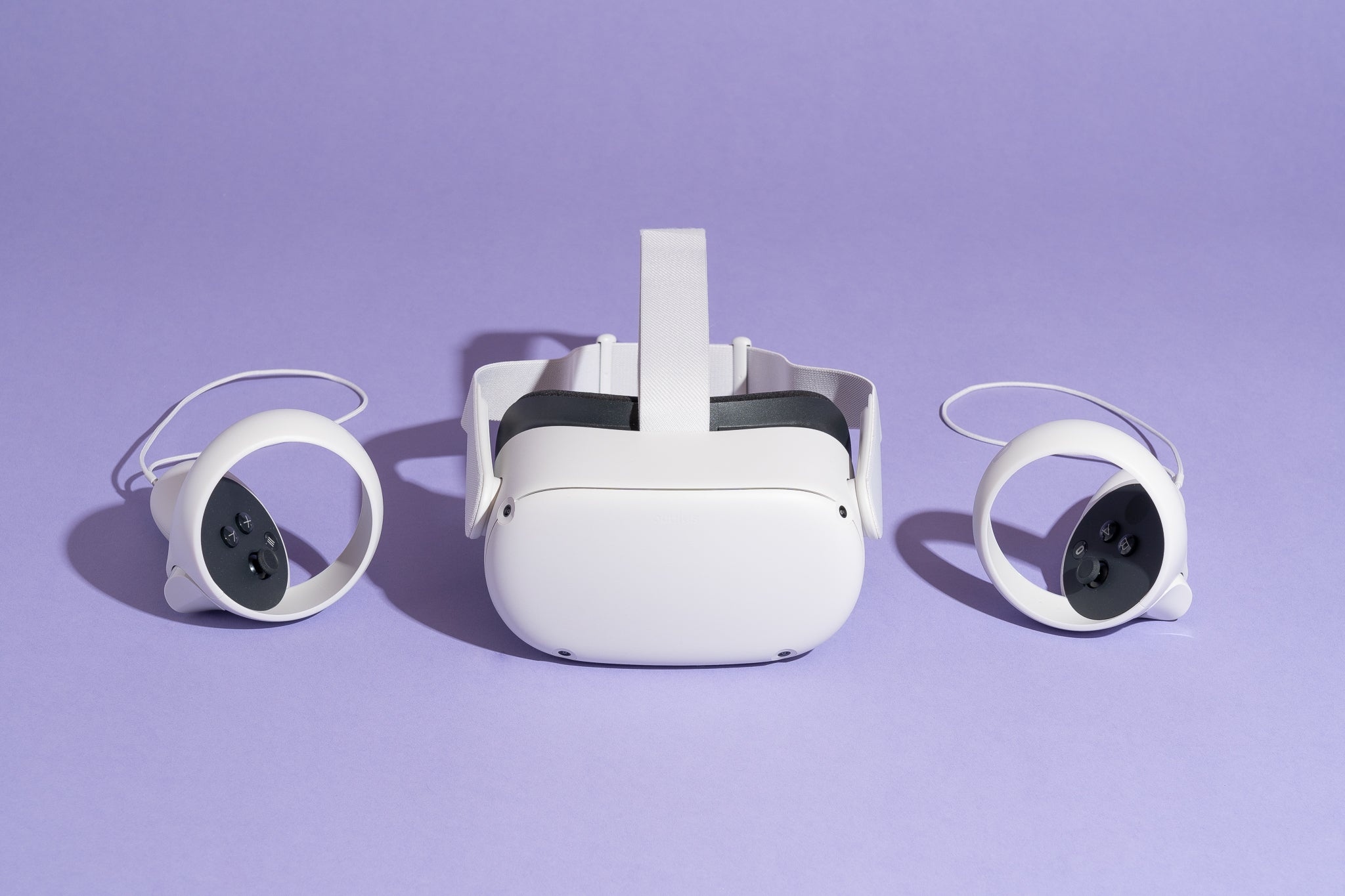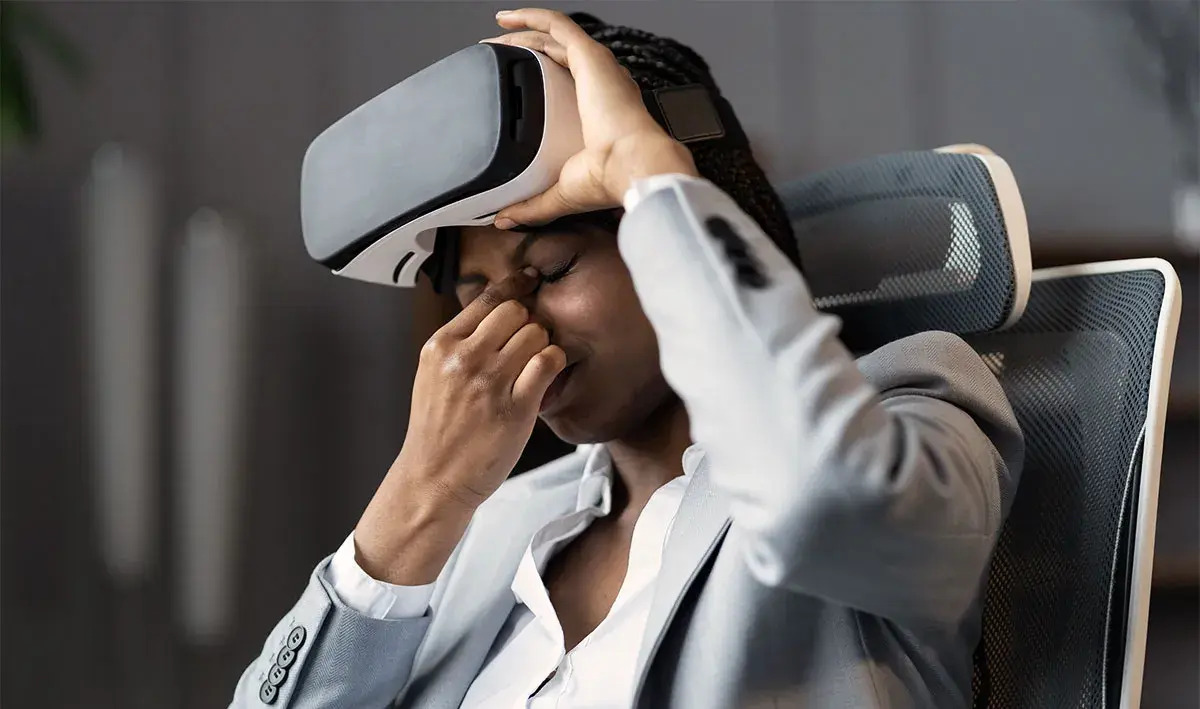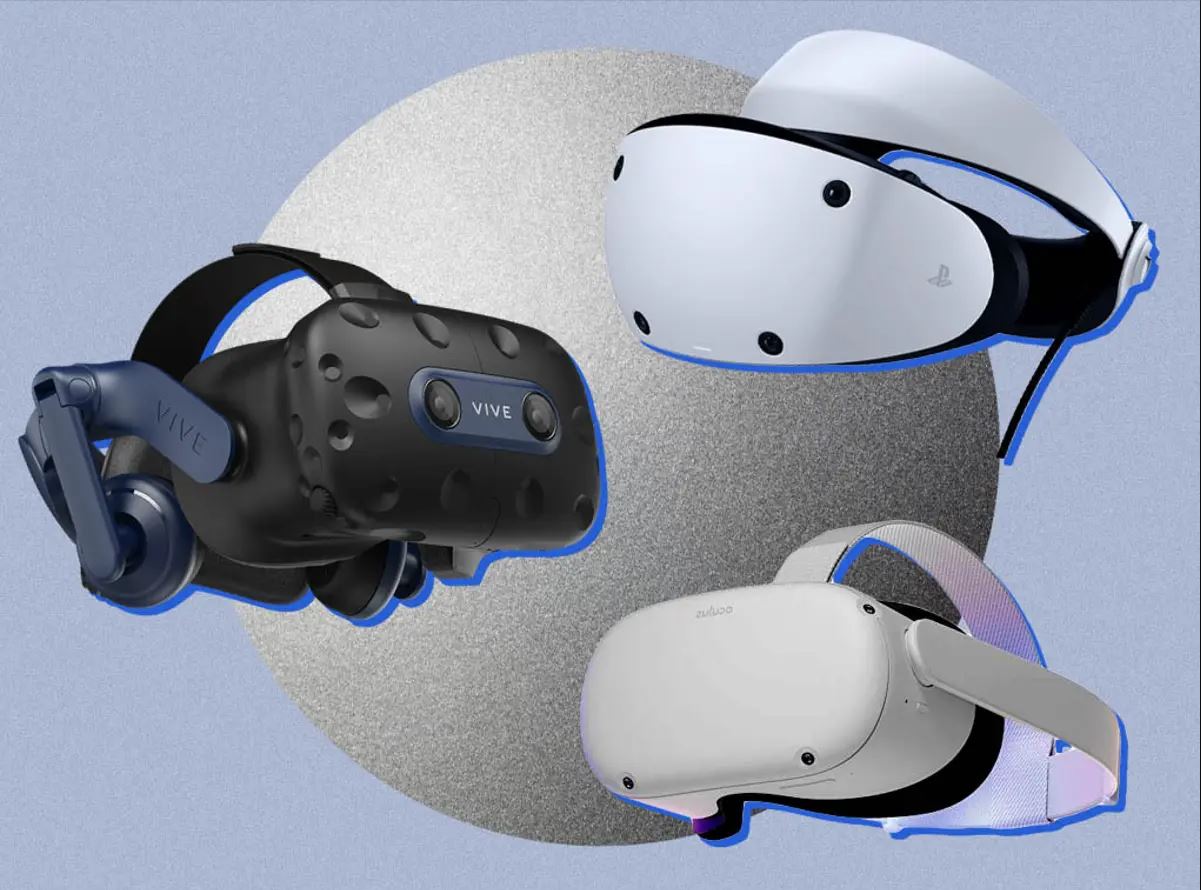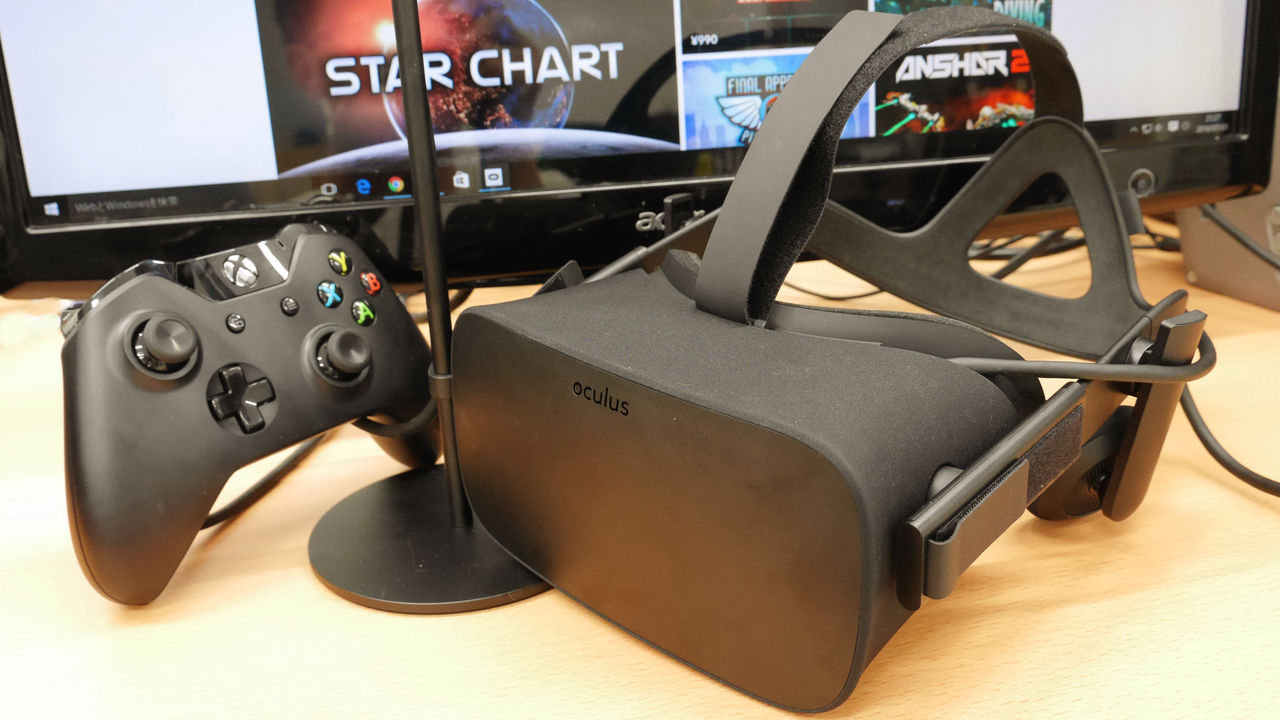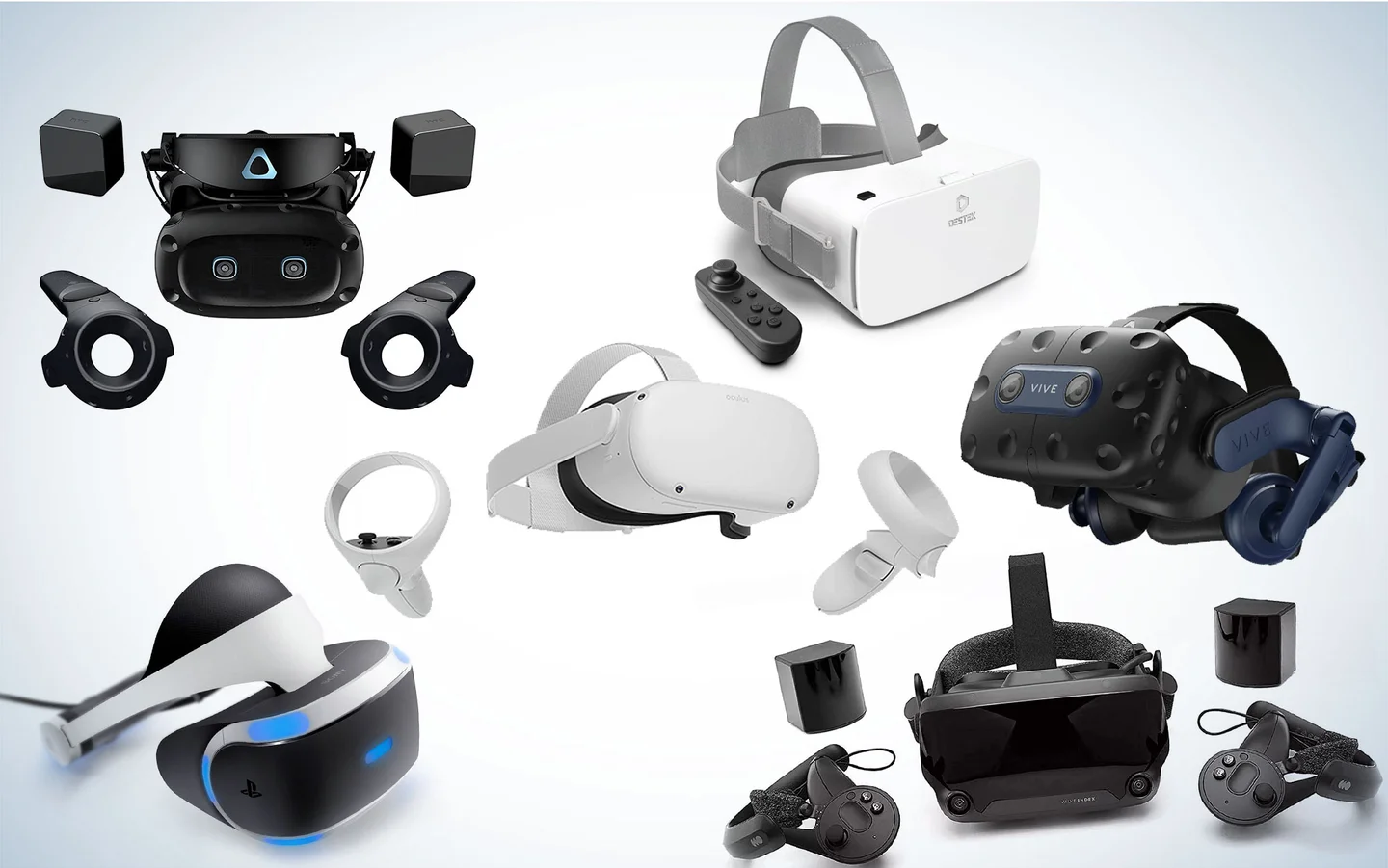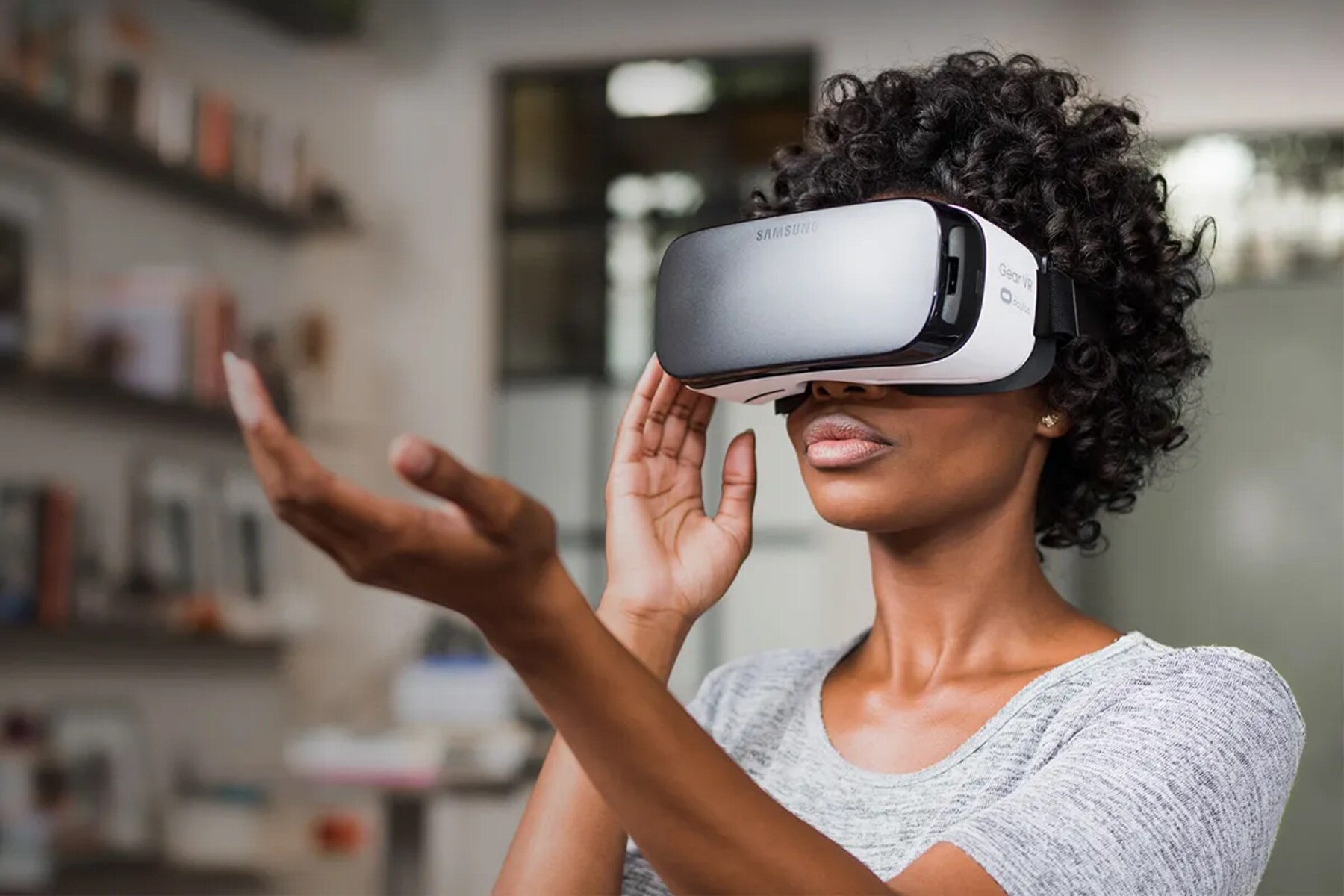Introduction
Virtual reality has taken the world by storm, revolutionizing industries such as gaming, entertainment, education, and healthcare. With its immersive and interactive nature, virtual reality has the ability to transport users to a completely different world, allowing them to experience things they could never do in real life. However, for some individuals, this incredible technology comes with an unwanted side effect – motion sickness.
Virtual reality sickness, also known as cybersickness or VR sickness, is a phenomenon that occurs when using virtual reality devices. Similar to motion sickness experienced during car rides or boat trips, virtual reality sickness can cause symptoms such as nausea, dizziness, headache, and disorientation. While not everyone experiences virtual reality sickness, it is a common issue that can hinder the overall experience and enjoyment of virtual reality.
Understanding why virtual reality can make some people sick requires a closer look at how this technology works. By examining the causes and factors that contribute to virtual reality sickness, we can gain insights into ways to mitigate its effects and make the VR experience more comfortable and enjoyable for everyone.
What is virtual reality?
Virtual reality (VR) refers to a simulated experience that can be similar to or completely different from the real world. It is achieved through the use of advanced technology that creates a computer-generated environment, which users can interact with and perceive as if they were physically present within it.
Virtual reality typically involves the use of a head-mounted display (HMD) that covers the user’s eyes and provides a 3D visual experience. This visual immersion is often combined with various other sensory inputs, such as surround sound audio, haptic feedback, and motion tracking devices, to enhance the sense of presence and realism.
The goal of virtual reality is to transport users into an alternate reality, whether it be a fantastical world, an educational environment, or a realistic simulation. By creating a sense of immersion and engagement, virtual reality enables users to explore and interact with these virtual environments in ways that were previously unimaginable.
The applications of virtual reality extend far beyond entertainment and gaming. In the healthcare field, VR has been used for medical training simulations, pain management, and therapy for mental health disorders. In education, it offers immersive learning experiences and virtual field trips. Architects and designers utilize VR to visualize and walk through 3D models of buildings before construction. The possibilities are vast and continue to expand as technology advances.
Overall, virtual reality opens up new dimensions of possibilities, bringing us closer to the realms of imagination and providing a unique way to experience and interact with digital content. However, alongside its incredible potential, the issue of virtual reality sickness remains a challenge that needs to be addressed to ensure a comfortable and enjoyable experience for all users.
How does virtual reality work?
Virtual reality works by combining advanced technology and human perception to create a simulated environment that feels realistic and immersive. The key components of virtual reality include the hardware devices and software applications that work together to provide a seamless virtual experience.
The primary device used in virtual reality is the head-mounted display (HMD). This device is worn on the user’s head and typically contains two small screens, one for each eye, that display stereoscopic images. These screens provide a 3D visual experience and bring the virtual environment to life. Some HMDs also have built-in motion sensors to track the user’s head movement, allowing for greater immersion and interaction.
In addition to the HMD, virtual reality often incorporates other peripheral devices. These can include motion controllers, which allow users to interact with objects and navigate the virtual space, and haptic feedback devices, which provide tactile sensations to further enhance the sense of realism.
Virtual reality relies on powerful computer systems to generate and render the virtual environments in real-time. This requires highly capable graphics processing units (GPUs) and central processing units (CPUs) to handle the complex calculations and render the visuals at a high frame rate. The goal is to minimize any lag or latency between the user’s movements and the corresponding actions in the virtual world, as this can contribute to virtual reality sickness.
To create a truly immersive virtual experience, sound is another important element. Spatial audio technology is used to simulate realistic 3D soundscapes, where sounds come from different directions and change based on the user’s position and movements within the virtual environment. This adds an extra layer of immersion and contributes to the overall sense of presence.
Ultimately, virtual reality works by fooling the user’s senses into believing they are present in a different reality. By combining visual, auditory, and sometimes haptic feedback, virtual reality creates a convincing illusion of being in a different world, allowing for exploration, interaction, and unique experiences that go beyond the boundaries of the physical world.
The causes of motion sickness in virtual reality
Motion sickness is a common issue experienced by individuals using virtual reality systems. It occurs when there is a conflict between the sensory information received by the brain and the perceived motion of the virtual environment. Several factors contribute to motion sickness in virtual reality:
1. Vestibular System Discrepancy: The vestibular system, located in the inner ear, is responsible for maintaining balance and sense of motion. In virtual reality, conflicting sensory information can create a disconnect between the movements perceived by the eyes and the lack of corresponding physical motion detected by the vestibular system. This sensory mismatch can lead to feelings of dizziness and nausea.
2. Visual-vestibular Conflict: Virtual reality can induce a conflict between visual cues and the vestibular system. When users move within a virtual environment while remaining physically stationary, the brain expects corresponding signals from the vestibular system to confirm the movement. However, since there is no actual motion, this visual-vestibular conflict can trigger symptoms of motion sickness.
3. Latency: Latency, the time delay between a user’s motion and the corresponding changes in the virtual environment, can exacerbate motion sickness. High latency can cause a perceived lag between movements, leading to a disconnect between what is seen and what is felt. This can be particularly problematic during fast-paced or sudden movements in the virtual world.
4. Field of View (FOV): The field of view, or the extent of the visual environment that can be seen at any given moment, has an impact on motion sickness susceptibility. Narrow FOVs can create a sense of tunnel vision, limiting peripheral vision and causing discomfort. A wider FOV can help reduce this discomfort and provide a more immersive experience.
5. Refresh Rate: The refresh rate of the display used in virtual reality systems also plays a role in motion sickness. Low refresh rates can lead to a flickering effect, which can strain the eyes and cause discomfort. High refresh rates, on the other hand, can provide smoother visuals that are more in sync with the user’s movements.
By understanding these underlying causes of motion sickness in virtual reality, developers and engineers can work towards implementing design solutions to reduce these issues. Minimizing latency, optimizing the field of view, and improving refresh rates are some approaches that can enhance the virtual reality experience and mitigate the discomfort associated with motion sickness.
The role of latency in virtual reality sickness
Latency, or the delay between a user’s movement and the corresponding changes in the virtual environment, is a critical factor that can contribute to virtual reality sickness. High latency can lead to a perceptible lag, causing a disconnect between the user’s actions and the visual feedback they receive. This discrepancy between expected and actual movement can induce discomfort and motion sickness symptoms. Understanding the role of latency is essential for developers and engineers in creating a seamless and comfortable virtual reality experience.
When users interact with a virtual reality system, their actions are tracked and processed in real-time. The system then generates the visual feedback based on these inputs. However, there is a finite time required for the system to process the data, render the graphics, and display them to the user. This time delay is the latency.
One of the primary issues with latency is that it disrupts the sense of presence in virtual reality. The brain expects immediate feedback when users make a movement or change their position in the virtual environment. When there is noticeable latency, the brain perceives a discrepancy between the expected and actual motion. This conflict can trigger motion sickness symptoms such as nausea, dizziness, and disorientation.
High latency also impacts the user’s ability to maintain a sense of control and immersion. Actions that require quick reactions, such as turning the head or moving the hands, can feel delayed or sluggish when there is notable latency. This can result in a jarring and uncomfortable experience, leading to an increased risk of motion sickness.
To minimize the impact of latency on virtual reality sickness, several strategies can be employed. One approach is to optimize the hardware and software components of the virtual reality system. This can involve using high-performance GPUs and CPUs to reduce processing time, as well as optimizing the rendering pipeline to minimize latency during the graphics generation.
Another important consideration is reducing the overall system latency by optimizing the tracking and input devices. Precise and responsive tracking systems, such as those using infrared or inside-out tracking, can help improve the accuracy of user movements, reducing the perceived latency. Additionally, minimizing the latency between the user’s input devices, such as motion controllers, and the virtual environment interaction can contribute to a smoother and more natural experience.
By prioritizing low latency in the development of virtual reality systems, developers and engineers can create a more comfortable and immersive experience for users. Reducing latency not only helps alleviate motion sickness symptoms but also enhances the overall sense of presence and control, allowing users to fully immerse themselves in the virtual world.
The effects of visual discrepancies on virtual reality sickness
In virtual reality, the visual experience plays a crucial role in creating a sense of immersion and presence. However, when there are discrepancies or inconsistencies in the visual cues perceived by users, it can contribute to virtual reality sickness. Understanding the effects of visual discrepancies is essential for developers and designers to minimize discomfort and enhance the overall virtual reality experience.
One common visual discrepancy that can lead to virtual reality sickness is a mismatch between the visual motion and the perceived motion in the virtual environment. When users move or change their position within the virtual world, they expect the visual feedback to align with their movements. However, if there is a noticeable delay or inaccuracies in rendering the visual changes, it can create a mismatch between what the user sees and what they expect to see. This mismatch can induce symptoms of motion sickness such as nausea, dizziness, and disorientation.
Another visual discrepancy that can contribute to virtual reality sickness is an inconsistency between the virtual and physical reference frames. Users rely on their visual cues to understand their spatial orientation and position within the virtual environment. When there is a conflict between what the visual cues suggest and the actual physical reference point, it can lead to a sense of confusion and discomfort. For example, if users perceive themselves to be standing still in the virtual environment but their physical body is moving or vice versa, it can cause a disconnect that contributes to virtual reality sickness.
The visual fidelity and quality of the virtual environment also play a role in virtual reality sickness. Low-resolution graphics, pixelation, or visual artifacts can strain the user’s eyes and create visual discomfort. Additionally, fast-moving or rapidly changing visuals, such as quick camera movements or flickering lights, can induce eye strain and exacerbate symptoms of motion sickness.
Addressing visual discrepancies in virtual reality can be challenging, but there are steps that can be taken to minimize their effects. Firstly, optimizing the rendering process and graphics performance can reduce delays and inaccuracies in visual feedback, enhancing the sense of realism and reducing the chances of motion sickness. Secondly, ensuring a consistent and accurate mapping between physical movements and the visual representation in the virtual environment can help maintain spatial coherence and minimize confusion.
Lastly, paying attention to visual comfort factors such as resolution, frame rate, and graphical fidelity is essential. High-resolution displays, smooth frame rates, and attention to detail in graphical quality can create a visually pleasing and comfortable experience for users, reducing the likelihood of discomfort and virtual reality sickness.
By addressing and minimizing visual discrepancies in virtual reality, developers and designers can create a more seamless and immersive experience that enhances user comfort and enjoyment, while reducing the risk of virtual reality sickness.
The importance of field of view in virtual reality sickness
Field of view (FOV) refers to the extent of the visual environment that can be seen at any given moment. In virtual reality, the field of view plays a crucial role in creating a realistic and immersive experience. However, when the FOV is narrow or restricted, it can contribute to virtual reality sickness. Understanding the importance of field of view is crucial for developers and designers to provide a comfortable and enjoyable virtual reality experience.
A narrow field of view in virtual reality can create a sense of tunnel vision, where the peripheral vision is limited, and users feel a restricted view of their surroundings. This restricted view can lead to a disconnect between the visual cues and the user’s expectations, causing discomfort and disorientation. In some cases, this can induce motion sickness symptoms such as nausea and dizziness.
A wider field of view, on the other hand, allows users to have a broader and more natural view of the virtual environment. A wider FOV enhances the sense of immersion by providing a more encompassing and realistic visual experience. It helps users feel more present and visually connected to the virtual world, reducing the likelihood of motion sickness symptoms.
One reason why a wider field of view is important is because it aligns more closely with our natural human vision. Our eyes are capable of perceiving a wide range of visuals in our peripheral vision, allowing us to gather information about our surroundings and maintain spatial awareness. When the virtual reality experience replicates this natural field of view, it reduces the chance of visual discomfort and increases the sense of presence within the virtual environment.
In addition to reducing the risk of motion sickness, a wider field of view can also enhance the depth perception in virtual reality. With a broader view, users can better judge distances and perceive the relative sizes and positions of objects within the virtual environment. This enhances the sense of realism and spatial awareness, making the virtual reality experience more engaging and immersive.
It is worth noting that increasing the field of view in virtual reality may require more computational power and can pose design challenges for developers. However, by prioritizing a wider field of view, developers can create a more comfortable and realistic virtual reality experience for users, reducing the likelihood of motion sickness and enhancing immersion.
Overall, the field of view in virtual reality plays a crucial role in the user’s comfort, immersion, and overall experience. By providing a wider field of view that closely resembles our natural visual perception, developers can minimize the risk of motion sickness and create virtual reality experiences that are both visually satisfying and enjoyable.
How refresh rate affects virtual reality sickness
The refresh rate of a display refers to the number of times per second that the screen updates its image. In the context of virtual reality, the refresh rate plays a crucial role in the overall comfort and experience of users. A low refresh rate can contribute to virtual reality sickness, while a higher refresh rate can help mitigate these symptoms. Understanding how refresh rate affects virtual reality sickness is important for developers to create smooth and immersive experiences.
When the refresh rate is low in virtual reality, the displayed images can appear to stutter or flicker. This flickering effect can strain the eyes and lead to visual discomfort. Prolonged exposure to low refresh rates can cause eye fatigue and contribute to symptoms of motion sickness, such as nausea and dizziness.
A higher refresh rate, on the other hand, provides smoother and more fluid motion in the virtual environment. This smoothness reduces the perceived lag between the user’s movements and the corresponding changes in the visual display. The improved synchronization between user actions and visual feedback helps create a more realistic and comfortable experience, decreasing the likelihood of motion sickness.
One reason why a higher refresh rate can reduce virtual reality sickness is that it reduces the occurrence of motion blur. Motion blur happens when fast-moving objects or scenes appear blurry or unclear due to the display’s inability to keep up with the rapid motion. With a higher refresh rate, the display can update the images more frequently, reducing motion blur and providing sharper and crisper visuals.
In addition to reducing motion blur, a higher refresh rate also helps with reducing latency in virtual reality. The time delay between user movements and the corresponding changes in the virtual environment can contribute to motion sickness. By increasing the refresh rate, the latency between user input and visual feedback can be minimized. This improved responsiveness creates a more natural and immersive experience, reducing the risk of discomfort and motion sickness.
It is worth noting that the refresh rate alone is not the only factor that determines the overall quality of the virtual reality experience. The combination of refresh rate with other factors like low latency, high resolution, and smooth tracking is important for achieving optimal comfort and immersion.
While higher refresh rates are desirable, it is essential to consider the limitations of the hardware and system when developing virtual reality experiences. Increasing the refresh rate may require more computational power and higher graphical rendering capabilities. Developers need to strike a balance between a high refresh rate and other technical constraints to deliver a seamless and enjoyable virtual reality experience.
In summary, the refresh rate of a virtual reality display affects the overall comfort and experience of users. A higher refresh rate provides smoother motion, reduces motion blur, and minimizes latency, all of which contribute to a more comfortable and immersive virtual reality experience. By prioritizing a higher refresh rate, developers can help reduce the risk of virtual reality sickness and create more enjoyable virtual reality experiences.
Ways to reduce virtual reality sickness
Virtual reality sickness can diminish the overall experience and enjoyment of using VR systems. However, there are several strategies and techniques that can help reduce the symptoms and increase comfort during virtual reality sessions. Developers and users alike can employ the following approaches to mitigate virtual reality sickness:
1. Gradual Exposure: Start with shorter VR sessions and gradually increase the duration to allow users to acclimate to the virtual environment. This gradual exposure helps the body and brain adapt to the sensory stimuli of VR and reduce the likelihood of discomfort.
2. Optimize Headset Fit: Ensuring a proper fit of the VR headset is crucial for comfort. Adjust the straps and placement of the headset to minimize pressure on the face and ensure a secure fit. A well-fitted headset can help prevent motion sickness induced by discomfort or poor ergonomics.
3. Take Frequent Breaks: Regular breaks during VR sessions can help prevent motion sickness symptoms. Step away from the virtual environment and focus on stationary objects in the real world to allow the senses to recalibrate.
4. Choose Comfortable Movement: Opt for smooth, natural movements and avoid sudden, jerky motions in the virtual world to minimize motion sickness. Incremental or teleportation-style movement can help reduce the disconnect between visual cues and physical sensations.
5. Optimize Graphics Settings: Adjusting the graphics settings, such as reducing motion blur or disabling certain visual effects, can help provide a smoother and more comfortable experience for users. Optimizing the graphics settings can also reduce the strain on the eyes, minimizing the risk of virtual reality sickness.
6. Maintain Adequate Lighting: Ensure proper lighting in the physical environment while using VR. Brightness discrepancies between the virtual reality environment and the physical surroundings can contribute to discomfort and disorientation.
7. Reduce Latency: Minimizing latency between user input and visual feedback is crucial to reducing virtual reality sickness. Developers can optimize the VR system’s hardware and software components to minimize the delay, resulting in a more realistic and responsive experience.
8. Maintain Good Posture: Users should maintain an upright and relaxed posture while using VR systems. Poor posture or slouching can contribute to feelings of discomfort or dizziness.
9. Deep Breathing and Focus Techniques: Engaging in deep breathing exercises and using focus techniques, such as fixing the gaze on a stationary object in the virtual environment, can help alleviate symptoms of virtual reality sickness and re-establish a sense of stability.
10. Seek Professional Advice: If persistent or severe symptoms of virtual reality sickness occur, it is best to consult with a healthcare professional who is knowledgeable about virtual reality and its potential impact on individuals.
By implementing these strategies, both developers and users can work together to reduce the likelihood and severity of virtual reality sickness. This, in turn, helps create a more comfortable and enjoyable experience, unlocking the full potential of virtual reality systems.
Conclusion
Virtual reality has revolutionized the way we experience digital content, offering immersive and interactive environments that transport users to new realities. However, virtual reality sickness can hinder the overall enjoyment of this technology. Understanding the causes and factors contributing to virtual reality sickness is crucial for developers and users to create a comfortable and seamless virtual reality experience.
Factors such as vestibular system discrepancy, visual-vestibular conflict, latency, field of view, and refresh rate all play significant roles in virtual reality sickness. By addressing these factors, developers can aim to minimize discomfort and reduce the risk of motion sickness during virtual reality sessions.
Through strategies like gradual exposure, optimizing headset fit, taking breaks, choosing comfortable movement, optimizing graphics settings, and minimizing latency, users can actively mitigate the symptoms of virtual reality sickness for a more immersive and enjoyable experience. Additionally, maintaining adequate lighting, maintaining good posture, and practicing deep breathing and focus techniques can further enhance comfort and reduce the likelihood of experiencing motion sickness.
Ultimately, the goal is to create virtual reality experiences that provide a seamless blend of visual and sensory feedback, closely mirroring our natural perceptions, and minimizing any discrepancies that may lead to discomfort. Both developers and users have a role to play in ensuring the successful and enjoyable use of virtual reality technology.
As virtual reality continues to evolve and become more widespread, addressing virtual reality sickness becomes even more important. By integrating user feedback, conducting research, and implementing design improvements, developers can enhance the comfort and user experience of virtual reality systems. With these advancements, virtual reality has the potential to unlock new possibilities and redefine how we interact with digital content.







